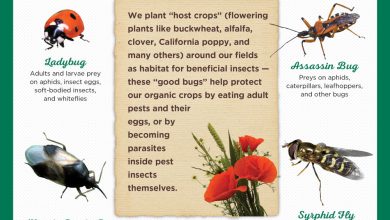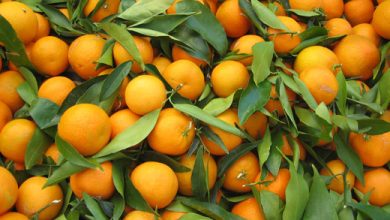Vinca Plant: [Cultivation, Irrigation, Associations, Pests and Diseases]
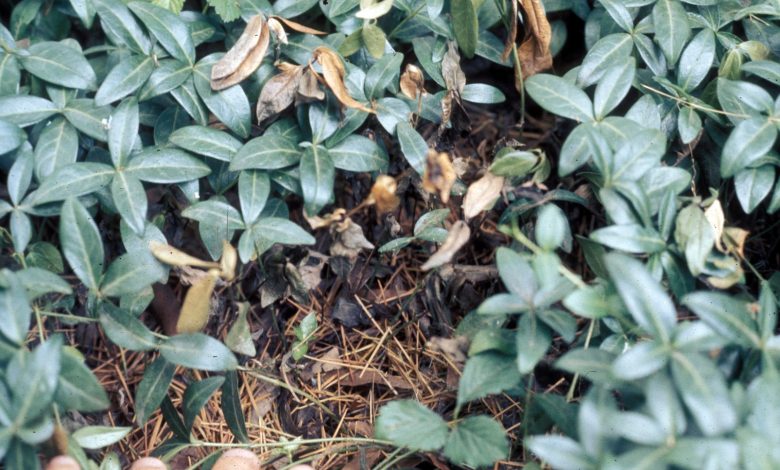
Important points when planting Vinca Plant
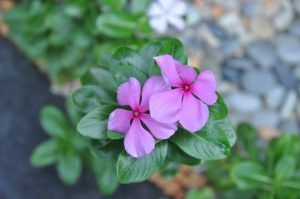 Where to sow? Half shade. Does not tolerate excess light.
Where to sow? Half shade. Does not tolerate excess light.- When? In winter.
- How do we prepare the land? Removed, removing weeds. With substrate and organic mulch during the fall and spring.
- How do we water? With drip.
- How often do we water? In summer, frequent, in winter scarce and the rest of the year very spaced irrigations.
- Plagues and diseases? Aphid and fungi that cause diseases such as powdery mildew.
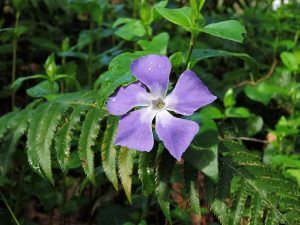 The vinca plant is considered a perfect groundcover species due to the condition of its evergreen foliage and pale purple blooms, which have five straight-edged petals.
The vinca plant is considered a perfect groundcover species due to the condition of its evergreen foliage and pale purple blooms, which have five straight-edged petals.
Vinca refers to several plants that belong to the genus of the same name and especially to the species Vinca major and Vinca minor, which come from southern Europe and northern Africa.
Knowledge that is especially important when having it in the garden since it must be kept away from small children and pets.
When to sow the Vinca plant?
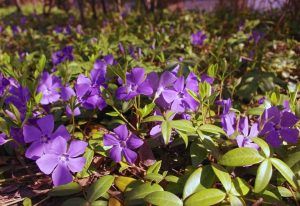 The vinca plant multiplies by division during the winter, although in autumn cuttings can be made from those stems that have roots, as they are in contact with the ground.
The vinca plant multiplies by division during the winter, although in autumn cuttings can be made from those stems that have roots, as they are in contact with the ground.
Its characteristic vigorous growth and ease of rooting make it easy to propagate by cuttings throughout the year. However, when the plants enter their active growth phase.
Where to do it?
If the shade is excessive, it will flower with less intensity, for this it is recommended to give light, not direct sunlight, for a few hours a day, although it tolerates cold and frost.
How to prepare the land?
It adapts to any type of soil, which should be kept slightly moist, and with fertilizer. In autumn and spring it is advisable to place an organic mulch.
How do we water the Vinca plant?
With the irrigations it can be used to fertilize with a well balanced fertilizer.
How do we plant a Vinca plant step by step?
The multiplication of the vinca plant can be done by layering, seed or cutting. Its cultivation can be very simple:
Planting by cuttings
- Prepare a container for rooting before taking the cuttings.
- Fill a 3.5-inch (9 cm) pot with a mixture of 2 parts coarse sand and 1 part perlite.
- Take a cutting below a couple of leaves from the tip of a healthy stem that does not have a flower.
- Pluck and discard the two lower sets of leaves and insert the leafless portion of the stem into a rooting powder.
- Insert the base (the cut end) of the stem into the prepared pot. Introduce it into the mixture of sand and perlite until the lower group of leaves rests on the surface.
- Pour water into the container one tablespoon at a time until the liquid begins to come out of the drainage holes. And water the cutting again only when the surface of the sand feels dry to the touch.
- Place the pot with the cutting in a warm, well-lit window where it receives at least eight hours of light a day. Limit exposure to direct sunlight to three hours or less.
- Check if roots have formed after three weeks.
- Keep the cutting in the pot for at least two weeks after root formation and before planting in a sunny or partially shaded spot with well-draining soil.
Planting by seeds
- Once the seed is sown.
- Water, trying to maintain its humidity until its seeds germinate.
- Plant in its final place after approximately two months.
What favorable associations does it have?
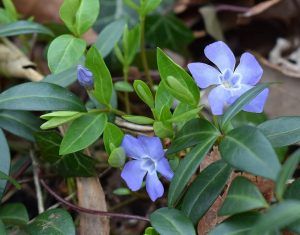 The association of crops of compatible plants produces benefits with respect to their cultivation separately, in addition to the use of light, water and/or nutrients.
The association of crops of compatible plants produces benefits with respect to their cultivation separately, in addition to the use of light, water and/or nutrients.
The Vinca can be found as part of the vegetation covering the banks of rivers, springs and shady places.
It shares habitat with other species from cool areas, such as Hedera helix, Clematis vitalba, Rubus ulmifolius.
What pests and diseases attack the Vinca plant?
Aphids and fungi that cause diseases such as powdery mildew. Botrytis cinerea, Rust and at the root level Rhizoctonia, the latter caused by root rot.
Bibliography and references
- Encyclopedia My first knowledge about Plants, Snakes and Conservation. (1961). Spanish edition by Dr. Frank Thompson. Grolier Publisher Incorporated New York. Printed in Mexico.
digital database
- Joseeljardinero.com. Mistakes when watering plants. Reproduced from: https://www.joseeljardinero.com/errores-al-regar-las-plantas/
- Lanaturalezatropical.com. How to cultivate Vincarias, Vica rosacea. Reproduced from: https://naturalezatropical.com/por-que-cultivar-vicarias/
- Bekiahogar.com. Vincas characteristics and care. Reproduced from: https://www.bekiahogar.com/articulos/vinca-caracteristicas-cubiertas/
- Difficult Crops.com. Madagascar periwinkle, catharanthus roseus. Reproduced from: https://www.pthorticulture.com/es/centro-de-formacion/cultivos-dificiles-vinca-de-madagascar-catharanthus-roseus/
- Plantasparacercoyjardín.com. Vinca plant. Reproduced from: https://plantasparacercoyjardin.com/planta-vinca/
- Floresyplantas.net. Vinca Minor. Reproduced from: https://www.floresyplantas.net/vinca-minor/
- Ehowenespanol.com. How to grow a vinca from stem cuttings. Reproduced from: https://www.ehowenespanol.com/cultivar-vinca-partir-esquejes-tallo-como_335663/


![Photo of Chlorosis in Plants: [How to Detect, Combat and Control It]](https://www.complete-gardening.com/wp-content/uploads/2021/06/Qué-es-la-clorosis-390x220.jpg)
